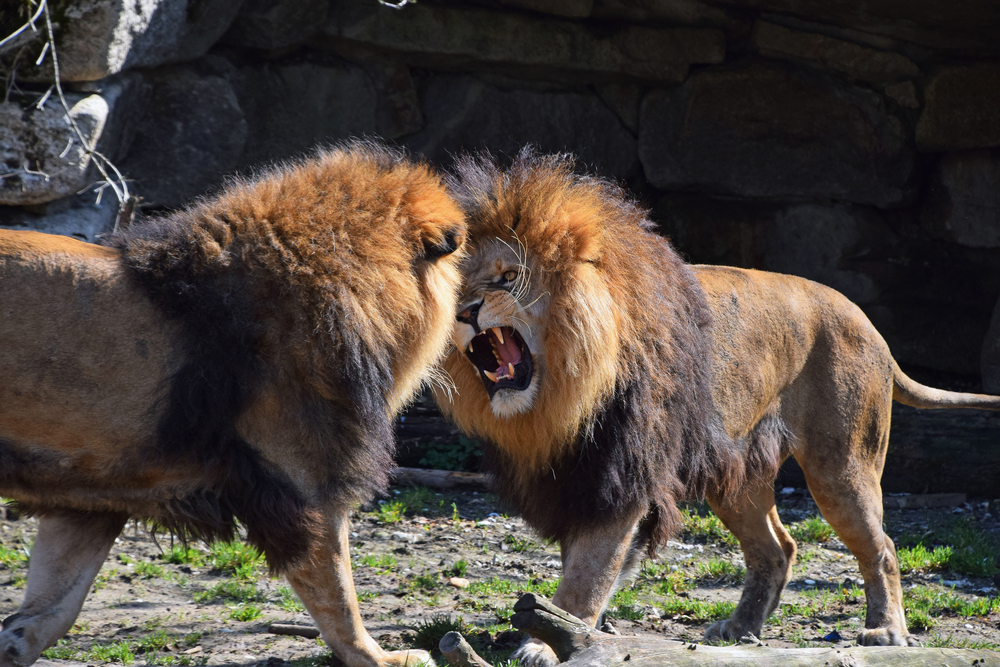Table of Contents (click to expand)
A lion’s roar is so loud because its vocal folds form a square shape. This shape essentially stabilizes the vocal cords, enabling them to better respond to the passing air. That way, lions can produce loud roars without exerting too much pressure on their lungs!
A lion’s roar is one of the most terrifying sounds in the animal kingdom. If you’re in the African savannas and happen to hear that sound, you may want to start running!
Lions, as you may already know, aren’t the only animals that can roar. This threatening feat can be accomplished by three other animals – tigers, leopards and jaguars. This isn’t a coincidence, of course; all four species belong to the same genus, Panthera.
So, what makes these animals so special? What is it about them that imbues them with such a frightening roar?
The Voice Box
The science behind those majestic roars all comes down to one organ: the larynx (voice box). The vocal folds (vocal cords) of the larynx are different in lions and tigers than they are in other animals (even cheetahs can’t roar, as they belong to a separate genus).
In general, the “voice” of any animal (including humans) is produced by air (from the lungs) flowing past the vocal folds. This causes the vocal folds to vibrate, thereby “chopping up” the airflow. Due to this staggered output of air, audible pulses of sound are produced. The exact nature and volume of the sound depend on the air pressure from the lungs (meaning that air pressure is the “fuel” of our voices) and on the muscles of the larynx, which manipulate the exact length and tension of the vocal folds.

Also Read: Why Does Your Voice Change When You Cry?
The Roar
The difference between the vocal folds of Panthera cats and other animals is in their shape. While our vocal folds form a triangular shape within our throats, the vocal folds of lions and tigers form a square shape. This is due to the big cats having some fat depositions located deep within the vocal fold ligament.
It is due to this deposited fat that the vocal folds get their flattened, square shape. This shape essentially stabilizes the vocal cords, enabling them to better respond to the air as it passes by. In this way, lions can produce loud roars without exerting too much pressure on their lungs!
The powerful roars of a lion can be as loud as 114 decibels, which is as loud as some rock concerts!

Interestingly, according to a speech scientist, who is also the Executive Director of Voice and Speech, the roar of a lion is somewhat like a baby’s cry for attention, although in the former case, the voice is much deeper. According to his research, low-frequency roars of lions are predetermined not by nerve impulses from their brain, but by the physical properties of their vocal fold tissue (i.e., its ability to stretch and shear).
Why Do Lions Roar?
Just like humans, animals communicate among themselves, albeit in languages that we don’t understand. Lions are very social as far as large carnivores are concerned, which is not surprising, as they live in ‘prides’ in the wild, i.e., a group of lions, lionesses and cubs.
Male lions roar for various reasons—a lion may roar to scare off an intruder, another lion, or a predator. It could also roar to warn its pride of imminent danger. Or it could roar to simply ‘show off’ in front of other lions, which obviously has an advantage in the wild when it comes to mating!
Next time you hear a lion roar, just think about how rapidly their vocal folds are vibrating to make that much noise, yet still withstanding all that stretching and shearing stress.
Or, you could just do what a ‘regular’ human being does, and… you know, be terrified.
Also Read: Why Do Hyenas Laugh?
Do you know why the lion’s roar is so loud and intimidating?

References (click to expand)
- Born to Roar - UNews Archive - The University of Utah. The University of Utah
- M. H. Hast - The Larynx Of Roaring And Non-Roaring Cats - CiteSeerX
- Klemuk, S. A., Riede, T., Walsh, E. J., & Titze, I. R. (2011, November 2). Adapted to Roar: Functional Morphology of Tiger and Lion Vocal Folds. (B. S. Launikonis, Ed.), PLoS ONE. Public Library of Science (PLoS).
